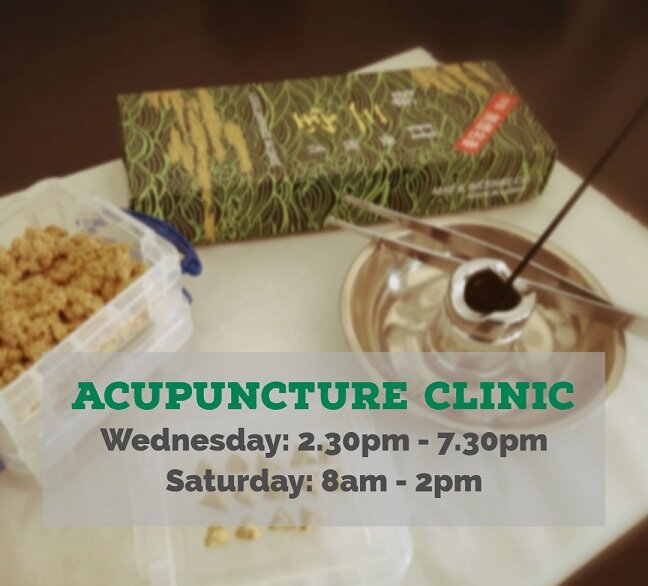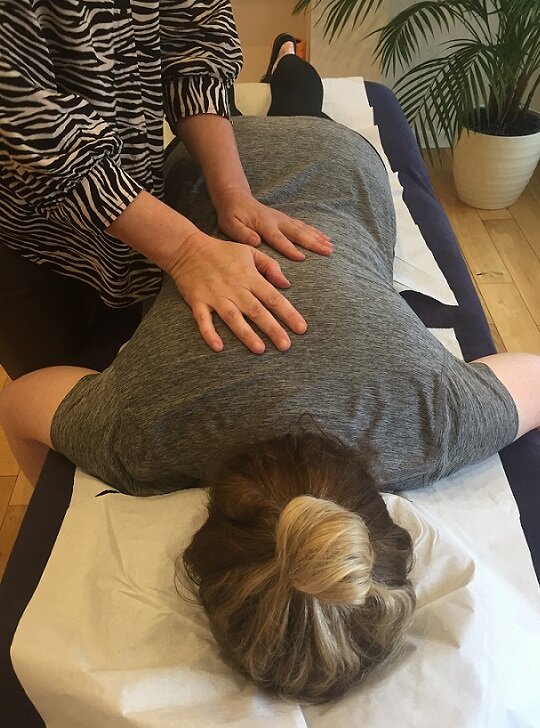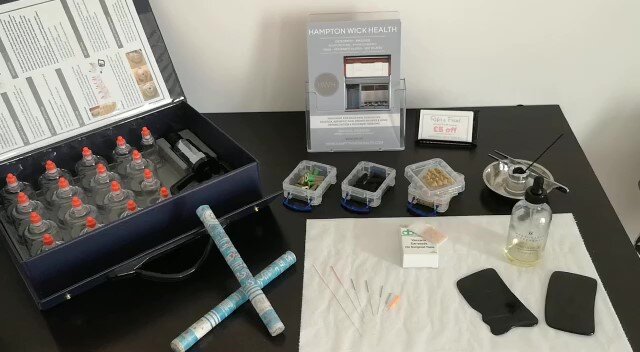Most people have heard of Acupuncture, but not many are aware of the other methods of treatment based on the principles of Chinese medicine.
Acupuncturist Suzanne Wheaton explains more about Tuina, Cupping and Gua sha.
About Chinese Medicine
According to traditional Chinese medicine, qi or chi is energy that flows through the body. Many people believe that a person's qi must be balanced and flowing freely to ensure their health and wellbeing. People also believe that qi can become blocked, causing pain or tension in the muscles and joints. Traditional East Asian medicine also views blood stasis or stagnation as a cause of pain and illness.
Different techniques have been developed with the idea of unblocking and allowing the qi to move freely through the body. Here are a few examples.
TUINA (CHINESE MEDICAL MASSAGE)
The Name
The name of this massage therapy modality comes from the two words describing actions in the treatment: tui means “to push” and na means “to grab or squeeze.” Tui Na has been called a combination of shiatsu (a Japanese bodywork practice) and acupressure massage.
The Origins
As with acupuncture, Tuina is inseparable from the rationale and philosophy of Chinese medicine. It has a long history with many periods of flourishing and development. The first massage techniques were born instinctively from the needs of the people who were living physically hard lives, exposed to the elements and prone to frequent injuries.
Tuina is both a subtle energy medicine and a form of physical bodywork. As a physical therapy it is effective at releasing the channel sinews (collectively the muscles, tendons and ligaments) and facilitating the movement of joints. As a form of energy medicine, I utilize and direct qi (energy) through my hands and into points along channels and into the organs and bones. Tuina can be vigorous or subtle depending on the requirement of treatment.
The Technique
I utilize several techniques and each has its own therapeutic quality. When performed for an appropriate length of time, each technique creates its own wave signal or vibratory pattern. These rhythmic waves and vibrations can affect the qi (energy) on all levels, traveling through points and along the channels and collaterals to the desired place.
By opening, releasing and balancing the channel sinews, tuina can treat not only muscular skeletal problems, but also any ailment that may be caused by emotional and postural holding patterns that have become unconscious and locked into the body’s protective connective tissue armour.
Like thai massage and shiatsu, tuina is traditionally practiced on fully clothed clients. You should wear loose, comfortable clothing to ensure the practitioner can move your joints through the full range of motion. In a tuina massage, massage oils are only used on the neck, hands, and feet.
The Benefits
Tuina is intended to be both relaxing and invigorating. Some techniques and strokes used in tuina are much like those used in a relaxing swedish massage, such as gliding, kneading, rocking, pulling, friction, and rolling.
CUPPING
The Origins
Cupping is an ancient therapy that has been used as part of folk medicine all over the world. Cupping was used also in English hospitals in the 1830’s to treat contagious diseases and was so popular at the time that there were paid ‘cuppers’ working in the hospitals. Originally, cups were made from animal horns, then pottery and bamboo and finally glass.
The Technique
This ancient technique involves using cups (glass, plastic or rubber) that are applied to your skin’s surface and stick by removing the oxygen. While it can leave marks on your skin that resembles bruises, they are not painful and will disappear in several days. The theory behind cupping is that it brings circulation and blood to the surface and muscles, removing the toxins that cause pain.
Cupping is used to:
· Move stagnant qi (energy) and blood,
· Regulate and invigorate the flow of Qi and blood
· Ease pain
· Relax the muscles
· Draw out and release pathogens
Cupping is effective in treating:
· Colds and flu
· Chronic bronchitis and asthma
· Muscular pain and tension
· Lower backache
· Frozen shoulder
· Tennis elbow
· Digestive weakness
· Irregular menstruation and dysmenorrhea
GUA SHA
The Origins
Gua sha is a similar therapy to cupping in that it is used to expel pathogens and move stagnant qi (energy) and blood.
The Technique
‘Gua’ means to scrape and ‘sha’ is ‘a red skin rash’, the rash or petechia is intentionally brought to the surface by scraping the skin with a rounded tool and the skin is lubricated with red flower oil. The red or purple rash is thought to be a sign that qi and blood are obstructed and not circulating properly therefore causing pain and discomfort. Gua sha is painless and patient’s often find it very relieving as it can be effective for easing pain and stiffness.
Similarities
Some manual therapists (osteopaths, physiotherapists, chiropractors, massage therapists) use a version of the technique known as instrument assisted soft tissue mobilization (IASTM). Using a tool instead of the hands during a massage allows a therapist to apply more pressure.
Gua Sha is used to:
· Break up areas of stagnation, congestion and stasis
· Relax and release sinews
· Ease pain
Gua Sha is effective in treating:
· Any acute or chronic pain, stiffness and immobility
· Colds and flu
· Headaches and migraine
· Hypertension
· Poor circulation









